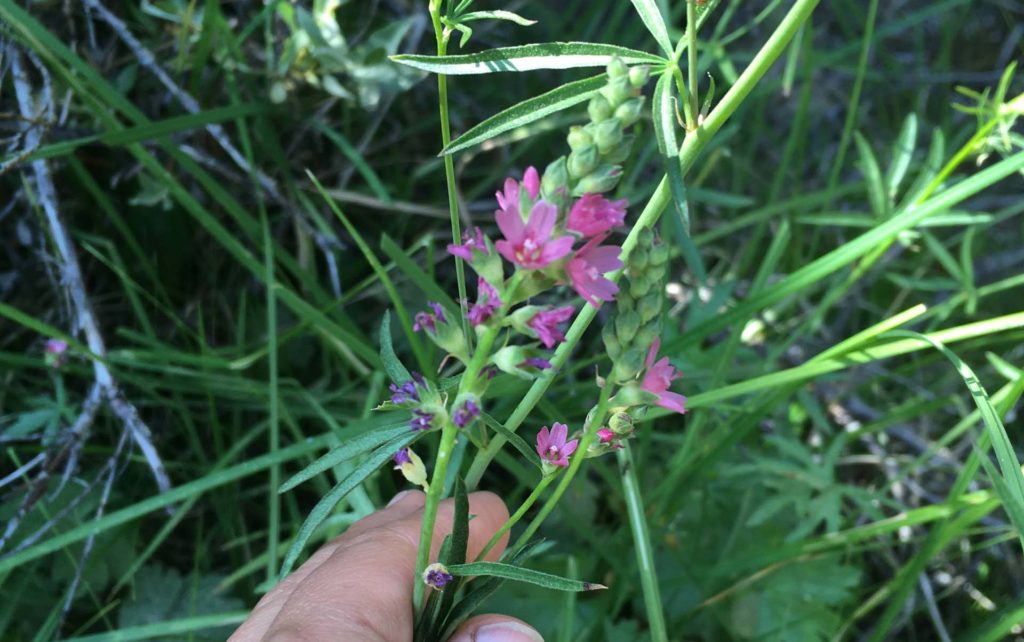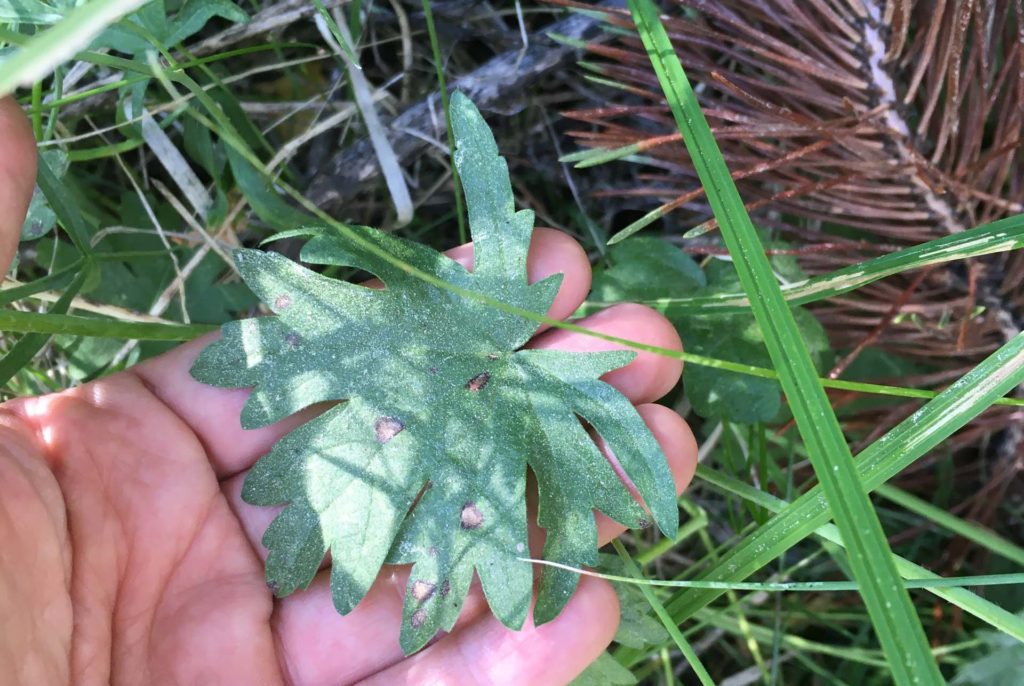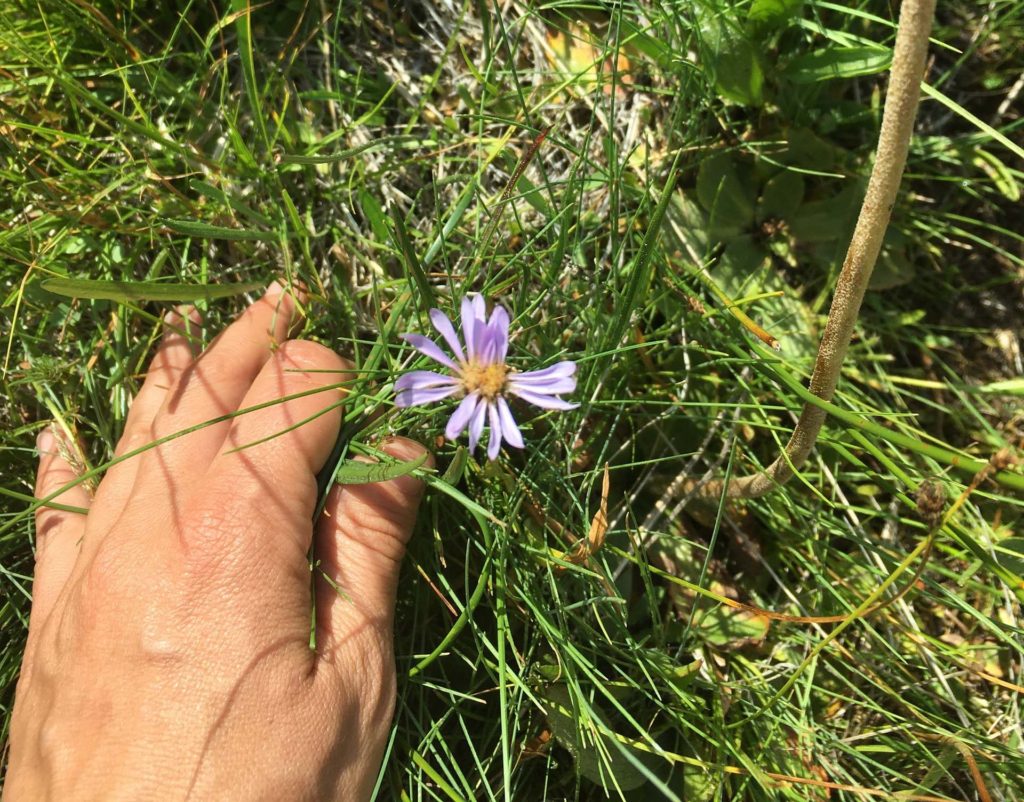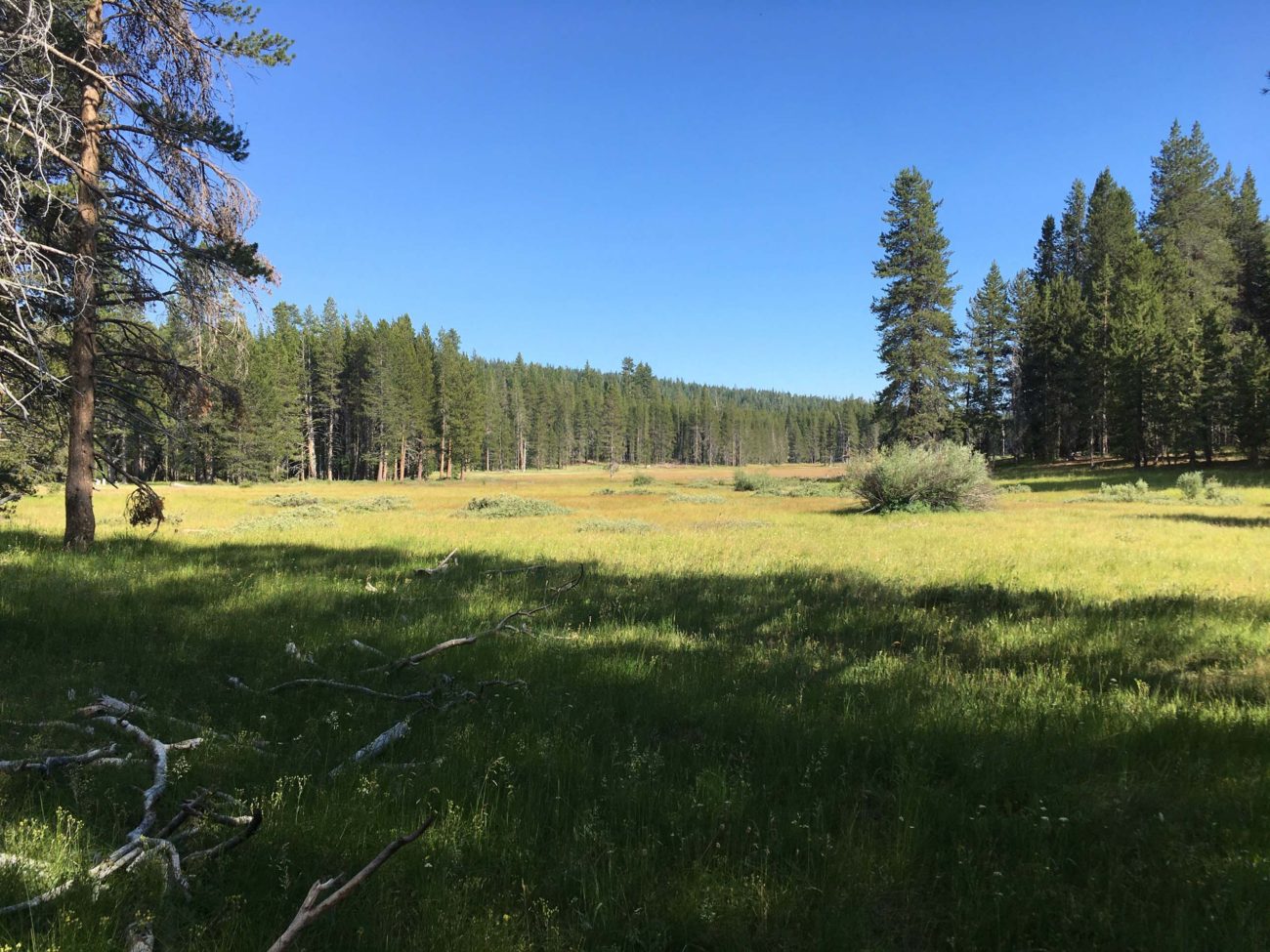
On our drive back to Redding from Plumas County, my husband and I stopped to picnic at Eagle Lake and then followed the Pine Creek drainage through Pine Creek Valley, across Highway 44, and up to Stephen’s Meadow off Forest Route 32N09. Here is a link to the location. The meadow was surrounded by conifers, mostly lodgepole pine (Pinus contorta). There is no official trail, but the moisture had receded into Pine Creek, leaving us free to wander the grass- and sedge-dominated meadow with dry shoes.
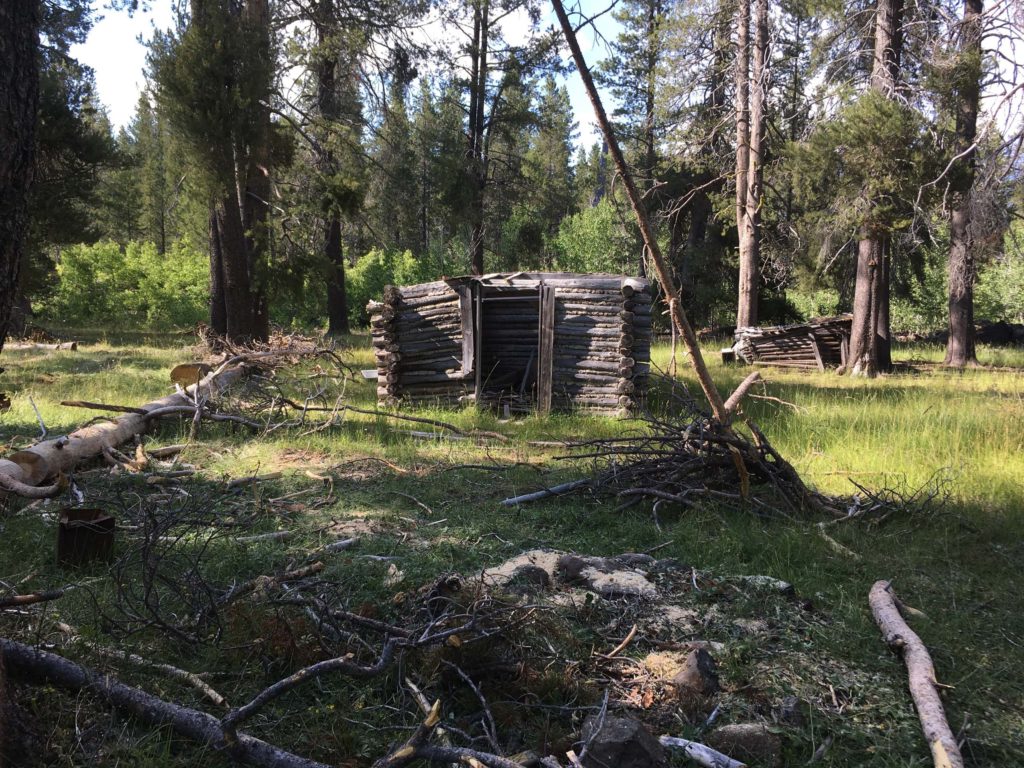
A fair amount of downed wood was decomposing in the lazy, meandering creek. A few stumps indicated that there had been some management, but otherwise the meadow did not feel constructed or significantly altered. The inlet to the meadow passed through a culvert, which dropped the flow of the creek into a terraced erosion-control structure that helped to dissipate the energy of the water before it made its course through the sedges.
Under the lodgepole pines, I saw a patch of what appeared to be mountain strawberries (Fragaria virginiana) that made me think of my first-year strawberries in my vegetable garden at home. I was advised to snip runners and blooms for this first year so the roots can establish. Looks like another year of eating invasive Himalayan blackberries (Rubus armeniacus) while waiting for my garden to catch up to the abundance of wild plants!
Strangely, patches of common horsetail (Equisetum arvense) grow under the pines. Horsetails tend to follow water. I did not know that lodgepole pine could handle high levels of soil moisture. Perhaps the volcanic soils allow for good drainage.
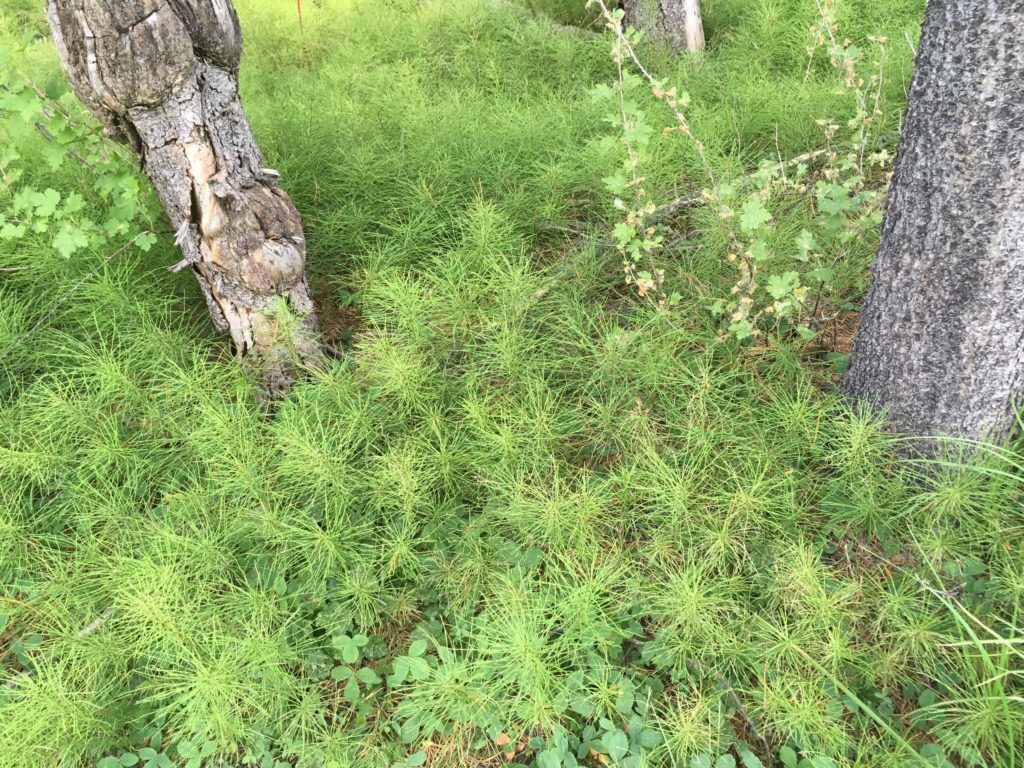
We wandered the meadow to the tune of buzzing pollinators circling our heads, with wildflowers in all directions. My favorite wildflower in the meadow was a small paintbrush that reminded me of a mix between crimson clover and wavy-leaved Indian paintbrush. It turned out to be Castilleja lassenensis!
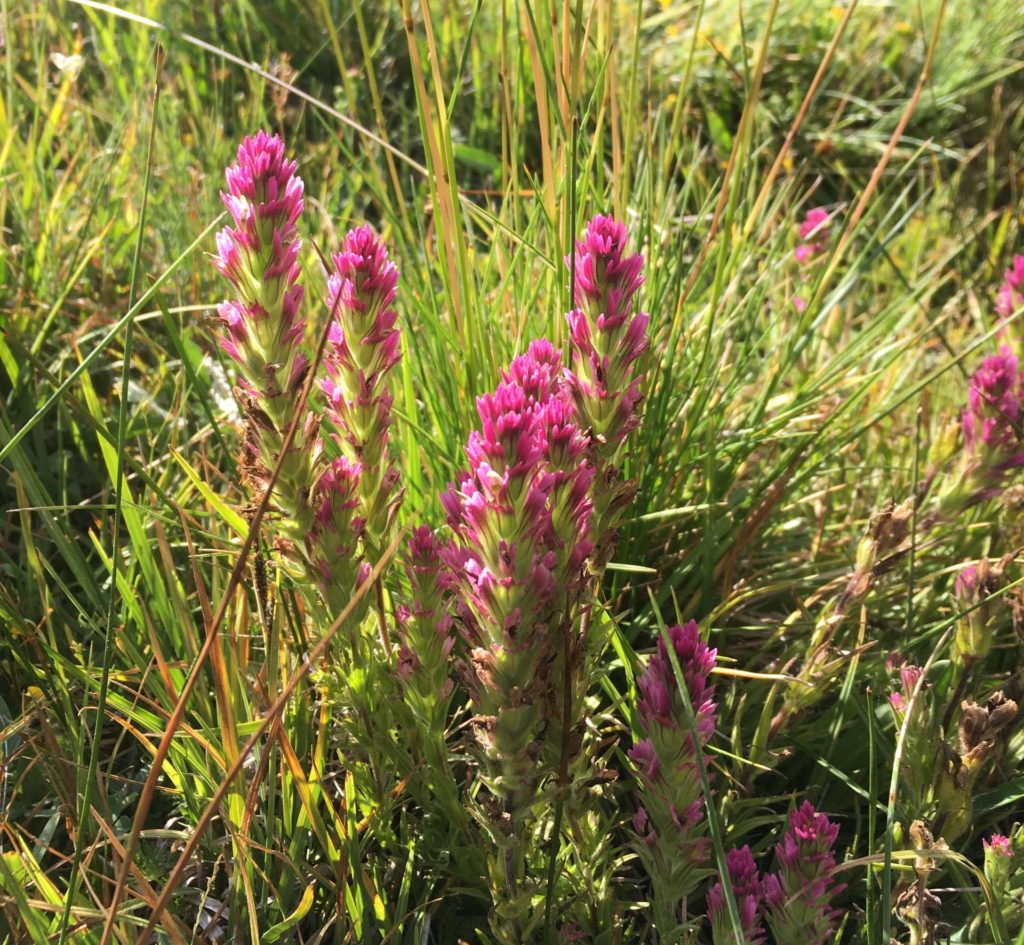
The easiest way to find Pine Creek in the meadow was to look for the willows. I believe this willow is a Sierra willow (Salix eastwoodiae).
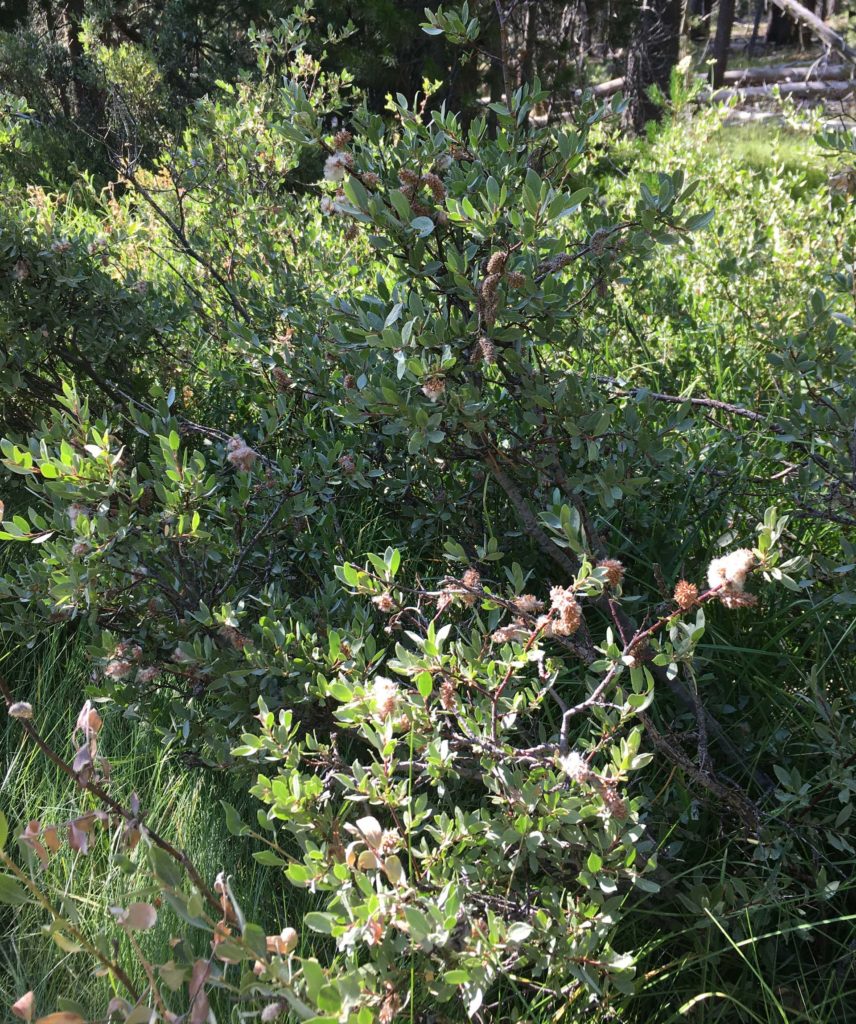
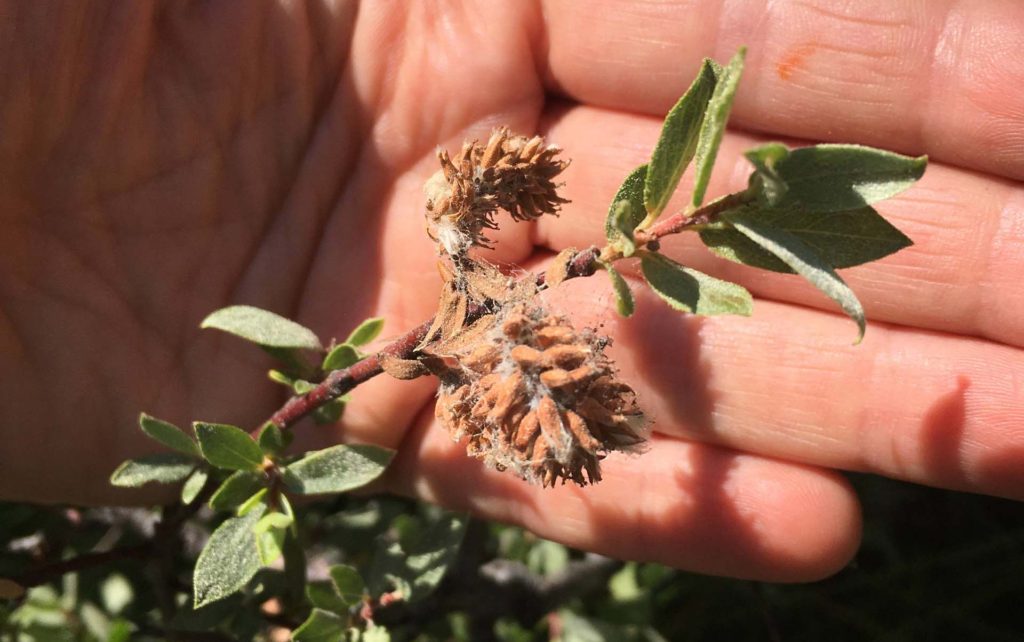
I made a list of 11 common willows in the north state to work on identifying. If you are just getting started on identifying willows, start by finding sandbar or narrowleaf willow on local creeks. The silver-gray color and small leaves are unmistakable. Next, you might work on identifying black and red willows, two common, native willows in Redding that grow with a central trunk more like a tree when left undisturbed. You will probably run into a lot of arroyo willow while working on the other three Salix. It seems to be everywhere in the Central Valley and takes on a bushier form, its slender branches perfect for hardwood cuttings.
Earlier that day we saw a plume of smoke in the rearview mirror that turned out to be the beginning of the Hog Fire. The fire may affect air quality around Pine Creek in the upcoming weeks, but when the air is clear, this meadow is well worth the visit. Long pants are advised for walking through the meadow. -Sarah Jarrett
